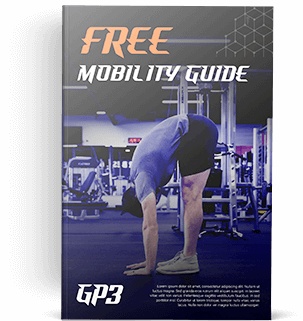Key Points:
1. I’ve long said that (1) fasting and (2) eating only meals, not snacks, are two of the best ways to show ourselves that hunger doesn’t need to control us.
2. This past year, I hadn’t really been taking my own advice.
3. In response, I underwent a challenging but illuminating 90-hour fasting experiment.
Estimated reading time: 5-10 minutes
Last week, I wrote about catching myself separating mind and body by failing to realize that stress caused a prolonged flare-up in an old wrist injury. I fell for the notion that the pain must have been entirely physical in nature, despite writing this post railing against the Western tendency to treat mind and body as separate. They’re not.
While it was humbling to acknowledge I hadn’t been practicing what I preach, I believe doing so can be highly beneficial. Unconscious beliefs, habits, and identities hold the most power to cause pain for ourselves and those around us, which means that discovering and facing these hidden patterns will ultimately reduce the likelihood of us contributing to the amount of suffering in the world. So, in the interest of transparency, I’m going to share another instance in which I found myself mindlessly displaying tendencies I know have little benefit, what I did about it, and what I learned.
Neglecting a crucial skill
Early in this blog’s lifespan, I wrote a post about mastering mild hunger. I firmly believe this skill is one of the three most vital tools to keep in your “nutritional toolbox.” Without this mastery, you’ll always feel as if hunger controls you. There are two key ways you can practice. First, make your default setting to eat only meals and no snacks. Second, practice regular fasting.
Both will clearly demonstrate that often, physiological signals that feel like hunger are really boredom, stress, anxiety, or even dehydration in disguise. However, if we don’t regularly experience mild hunger, not act upon it, and then feel our hunger pangs recede or disappear, our frame of reference will be skewed. We’ll tend to create a mental story that our hunger will grow stronger to the point of being unbearable if we don’t do something about it. If you’ve ever said to yourself, “Well, I’m not hungry now but my time is limited…I’m going to eat anyway so that I’m not hungry later,” then you know what I’m talking about. I’ve certainly done this!
Anyway, fasting and avoiding snacking will clearly illustrate that hunger doesn’t progress linearly. It ebbs and flows, and we absolutely do not need to treat it like an emergency that must be acted upon immediately.
So, all of this is well and good, but…
I recently realized that for much of 2022, I wasn’t following my own advice. That “eat now so you’re not hungry later” trap ensnared me all the time. I’d rarely go more than four hours without eating, and I’d abandoned my practice of regular fasting. For context, in 2018 and 2019, I’d regularly go 24-36 hours without eating. I’d do this at least once per quarter, often as frequently as once a month.
And yet, I realized that 2022 was a fairly “snacky” year for me. It hadn’t led to meaningful changes in my weight, but it’s not the way I prefer to operate. So, the first step was to undergo a long-overdue 24-hour fast.
But first, what’s the most effective way to fast?
Personally, I prefer 24-36 hour fasts, starting after my evening meal. This way, I can easily turn 24 hours into 36 simply by going to sleep. If you eat breakfast and decide to start your fast immediately afterwards, the day can feel much longer. Starting a fast in the morning means you have to spend exactly as much “awake time” in a 24-hour fast as you do for a 36-hour fast that starts in the evening. So, that’s the way I usually do it.
However, this time my decision to fast was a spur-of-the-moment one. In October, I was driving to a Sunday morning hike with some friends, eating an apple and drinking an energy drink when I said to myself, “Wow. It’s been a long time since I did a full day fast. I think I won’t have any more calories until tomorrow morning.” Now, I never fast without drinking a ton of liquid, and due to the hike, I had plenty of fluids with me. I continued to hydrate throughout the day.
Then, a funny thing happened
The next morning, I wasn’t hungry at all. And I mean at all. So, I decided to continue the fast. I figured I’d be hungry at dinner, but that still wasn’t the case. My hunger was at the, “Eh, I could eat but I don’t need to,” level of intensity, but nothing more.
Therefore, I thought, “Well, might as well try to break my fasting record.” Despite how regularly I used to do 24-36 hour fasts, my “personal best” wasn’t much longer than that. It was around 42 hours. In 2019, I had wanted to try a 48 hour fast, but I didn’t quite make it. Between hours 40 and 42, I clearly remember every waking thought being consumed by food. It was a pretty miserable experience. So, I broke the fast early and gorged myself on Tostitos Hint of Lime tortilla chips…and steak. This uncontrolled overindulgence made me so uncomfortable that I needed to take digestive enzymes, and I fell asleep around 7:30 p.m. I didn’t wake up until the next day.
But, this time was different
For the October 2022 fast, I again felt only mild hunger on morning three. I certainly didn’t feel hungry enough to act upon it. Also, I felt rather energized, so I decided to keep fasting. I’ll spare you the full recap, but in total, the energy drink and apple I’d eaten prior to beginning the fast ended up being the only calories I consumed for roughly 90 hours.
After deciding to finally eat again, I drew some lessons from the aforementioned fast-breaking mishap. This time, my first meal was made up mostly of raw fruit and seafood. Much easier on the digestive system. And yes, it was absolutely delicious.
What were the biggest takeaways from this experience?
It struck me that I went nearly four days without doing one of my favorite things, which I also physiologically need to survive…and I was completely fine. In fact, I felt pretty good during the entire experience. There were maybe three or four hours total where sensations of hunger were moderately to strongly unpleasant, but that was it. And, they invariably didn’t last.
Thus, I had a newfound appreciation for what my body and mind (or, bodymind, as multiple books I’ve recently read call it) could endure. Feelings of hunger? These too, shall pass. So we don’t need to treat them like a five-alarm emergency.
I do want to add a few caveats here:
- First, fasting for that long is not necessary. A 24-hour fast is totally sufficient to remind yourself what true, physiological hunger feels like. This also probably doesn’t need to be done more frequently than once per month.
- Be extremely careful with fasting if you have a history of eating disorders. If this applies to you, I’d recommend consulting a mental health professional who specializes in eating disorders to ask if it’s even appropriate to try. It may not be.
- The alertness and energy that many people report while fasting is only temporary. In fact, it only happens because your bodymind is worried that it is dying. Therefore, it “turns up the juice” to help you find some food. Don’t rely on this mechanism long term!
So, what DO you do when you haven’t been practicing what you preach?
Realizing that I’d slipped gradually away from heeding my own nutrition advice certainly humbled me. The fast helped me get back on track with monthly fasting, but I’ll tell you what it didn’t do. Luckily, it didn’t make me feel like a fraud. I could have easily started down a path of negative self talk. “How can you write about this stuff when you don’t even do it yourself anymore? You’re a hypocrite and nobody should listen to you.” I don’t recall if thoughts like this arose, but if they did, I didn’t listen to them. The truth is, we all slip up nutritionally. It can happen for extended periods of time, even to those of us who make their living from fitness!
And that’s totally okay. It’s when we expect perfection of ourselves that we suffer. With this in mind, I’ve been trying to apply a recent shift I made in strength training to other facets of my life. These past two years have led me to experiment with a number of different movements, some rather unorthodox. In contrast to a few years ago, when I find an area where my strength or mobility aren’t up to par, it’s genuinely exciting. I used to be frustrated by discoveries like this, probably because they contrasted with an identity of “strong, fit person.” Now, I realize that these deficiencies are areas that tend to progress quickly because they’ve been neglected. Addressing them leads to feeling better overall.
So, I’m doing my best to react the same way when I find hidden identities, thought patterns, and subconscious behaviors. When I find new ones, I’ll turn them into a blog post if they’re interesting enough to share. And I’ll begin the new year by challenging you to do the same! If you’re feeling brave, go ahead and let me know what you find.
Next week, we’re talking goals and resolutions. Happy New Year everyone 🙂
Before you go, I’d love to hear from you! What are some areas in your life where you might unknowingly not be practicing what you preach? I realize this is a super personal question, but if you’re feeling up to it, reply to this email and let me know!

